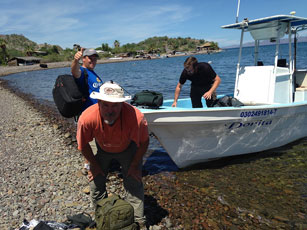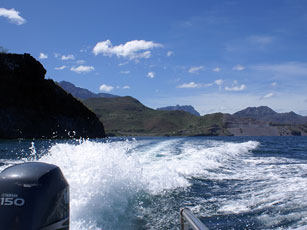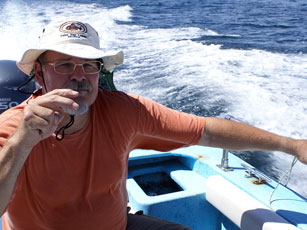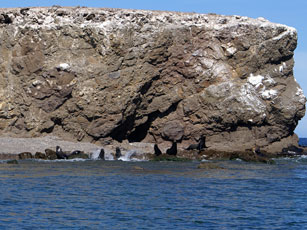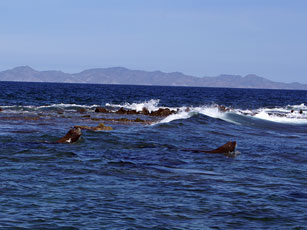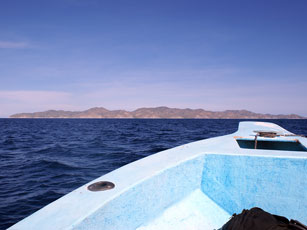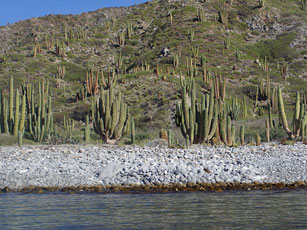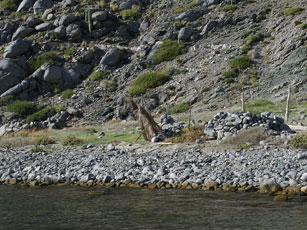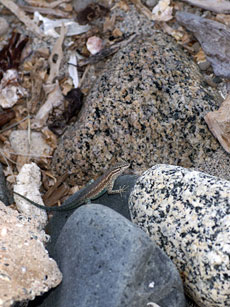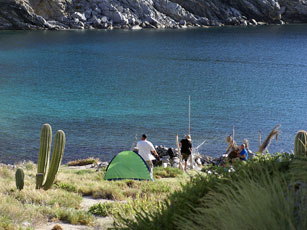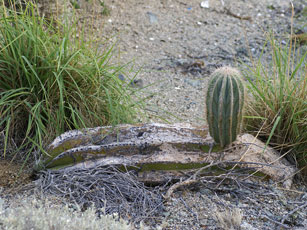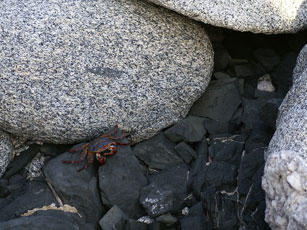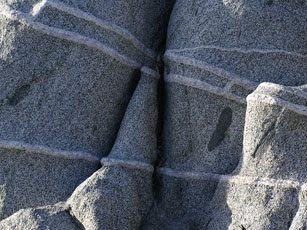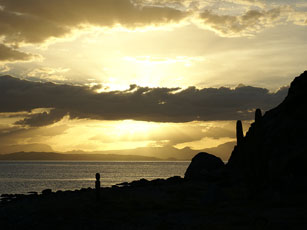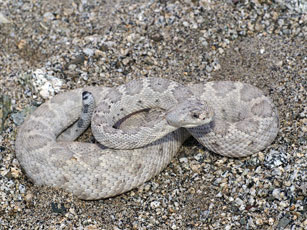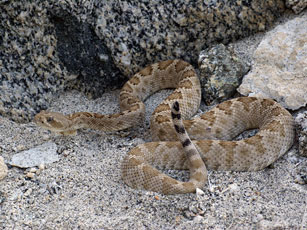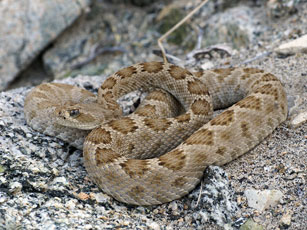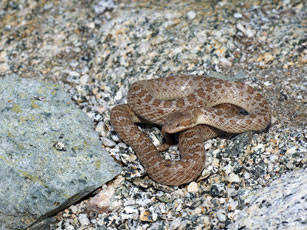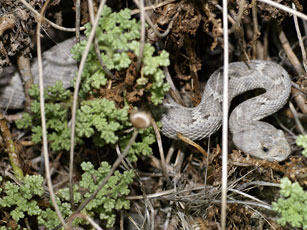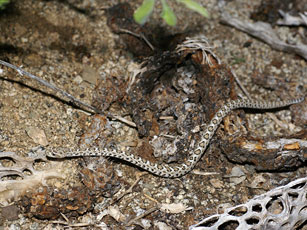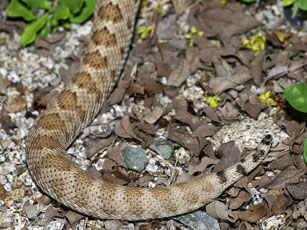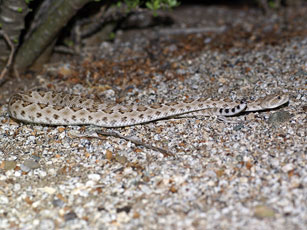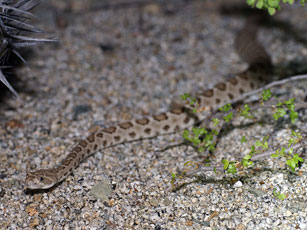
9-10-15
Trip Details
Location: Isla Santa Catalina, Baja California Sur, Mexico
Herpers: Shawn Vought, Jason Nelson, Joe Ehrenberger, Matt Cage, Mike Pingleton, Jim Scharosch
Account by: Jim Scharosch
Photos by: Jim Scharosch
This was our day to head out to Isla Santa Catalina. This was the day I was most looking forward to in the entire trip. Santa Catalina is an uninhabited island about XXX miles off the coast of Baja California. We would be the only people on the entire island when we were there.
We took our morning photos and then picked up the stuff we would need from the supermercado in Loreto. Santa Catalina is in the Parque Nacional Bahía de Loreto, which translates to Bay of Loreto National Park. We had to stop at the local park office to pick up our permits to use the park.
At the park office, they warned us of the danger of the snakes on the island and we ensured them we were experienced. They told us that a bite from the snakes would kill a man in two hours, and it was a two hour boat ride from the island back to land. It was kinda funny..
After that, we then headed to nearby Juncalito where we were to embark.
We stopped at a pulloff along the highway to take a photo of the islands from the mainland. You can see Santa Catalina way off in the distance.
We drove to Torres Sportfishing’s office and met Manuel Torres, our boat captain.
Manuel was a really nice guy and spoke enough english for us mostly mono-lingual’s to communicate with him. We loaded up the boat for the one and a half hour trip out.
I asked Manuel how many people he had taken to the island in all the years he had been doing this and he told me only around ten times.
As we passed the southern tip of Isla Carmen, Manuel slowed as we approached a group of sea lions. Santa Catalina is in the distance behind the sea lions.
We took off again and finally approached the island.
The bays of the island were rocky and getting out of the boat was challenging.
We got everything unloaded and set up camp near some small rocky structures that had been built by fishermen at some point.
We spent the late afternoon sweating in the heat and taking pictures of lizards, most which were endemic species.
A couple of Isla Santa Catalina Chuckwallas (Sauromalus klauberi)
A Isla Santa Catalina Island Side Blotched Lizard (Uta squamata)
We got our camp set up and I walked around and took some photos.
I found a nice shady spot, probably the only one in the bay where we were staying and hung out there watching the crabs crawl on the rocks.
I took this photo of the wash that we would be hiking when night came. The snakes use the bottom of the wash, crawling among the bushes looking for mice, lizards and birds to eat. I was kinda glad we wouldn’t have to hike up the rocky hillsides in the dark.
Evening came with a beautiful sunset and it was finally time to break out the flashlights and start looking for snakes.
It didn’t take long, I wasn’t looking for more than five minutes before I found a juvenile Santa Catalina Island Rattlesnake (Crotalus catalinensis).
It was about twelve inches in length. These rattlesnakes were the primary reason that I wanted to go on this trip. They are very interesting in their behavior and in the fact that they are the only rattlesnake that has evolved to the point where they no longer have a rattle. Where other rattlesnakes gain a rattle segment with each shed, these rattlesnakes rattle structure is such that the rattle segment pops off with each shed. It is believed that this adaptation makes them more stealthy as the crawl around in search of prey, though others believe it lost it’s rattle because it has no need to warn away predators that do not exist on the island. There are two color phases of the snake, one is a light tan animal with darker brown blotches and one is a light ashy gray background with darker gray blotches.
My main focus though was still to find an adult of the ashy gray phase. Within a couple of minutes I found one of them.
This made the trip for me. It was a large snake, as far as these snakes go. It was a bit over two feet in length.
Shaun got a really nice brown phase adult.
We also saw a number of the Isla Santa Catalina Night Snakes (Hysiglena t. catalinae).
By the time the night was over we ended up seeing between 16-18 of the Santa Catalina island rattlesnakes. I spent some time just watching a couple of them as they crawled around on the ground or in the low bushes. They didn’t seem at all alarmed by my presence or the light from my flashlight. They would just slowly cruise around looking for prey items, crawling on the ground and then up into the lowest branches of the bushes as they encountered them. It was an awesome experience.
We had to sleep on the ground that night and I admit I was a bit spooked by the large scorpions I had seen crawling everywhere. I knew we were far enough from the rattlesnake habitat not to have to worry about that, but the scorpions were everywhere. Luckily nothing happened and I slept an uneasy night on the hard ground. It was worth it though!!




